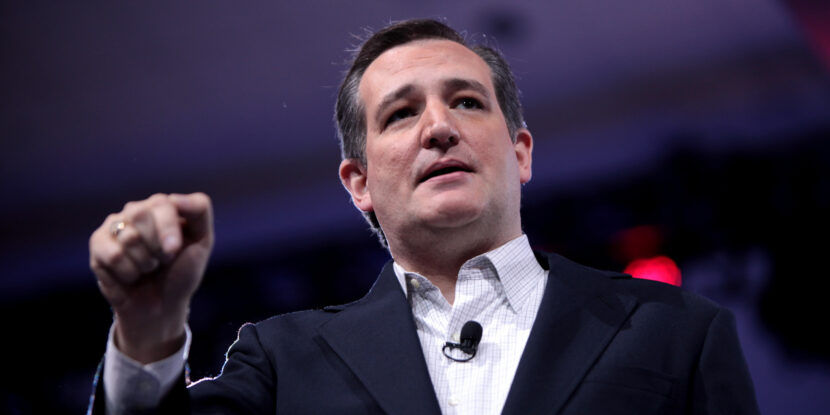
Jeet Heer, of the New (and For Sale) Republic, recently presented an oddly off kilter piece entitled “Ted Cruz mangled the history of the Great Depression.”
Therein he writes:
Fielding a question about tariffs at Thursday’s Republican debate, the Texas senator said the Great Depression was caused by the protectionist Smoot-Hawley Tariff Act of 1930. The problem with this claim can be seen by basic chronology. The Great Depression started in 1929 (and the economy had been fragile even earlier). So at worst Smoot-Hawley can be accused of exacerbating the Depression but not causing it.
Heer seems unschooled in the fact that markets are forward-looking and, as set forth in meticulous detail by the late Jude Wanniski in his supply side cult classic book The Way The World Works, that the progress of the Smoot-Hawley tariff act through the United States Congress correlates very well with the advent of 1929’s Black Monday and the ensuing Great Depression.
Heer further writes:
Another cause (of the Great Depression) was the inflexibility of monetary policy due to the gold standard. And of course one of Cruz’s signature policies, an idea which almost all mainstream economists regard with horror, is returning to the gold standard.
By “mainstream economists,” Heer appears to be alluding to the forty Neo-Keynesian economists infamously polled by the Booth School in 2012. Few of these are monetary economists, and none, so far as the record shows, anticipated the Panic of 2008. So much for “almost all.”
Heer conveniently, or ignorantly, overlooks the indisputably historic fact that the classical gold standard ended with the outbreak of World War I, over a decade prior to the Great Depression. Its replacement with the gold standard’s “grotesque caricature” called the “interwar gold standard” — a gold-exchange standard, treating the pound sterling and the dollar as equivalent to gold — provided a false gold standard facade while utterly failing to adhere to “the rules of the game.” This, indeed, was a precipitating factor in the Great Depression. The classical gold standard was framed for the crime perpetrated by its “evil twin.”
Sen. Cruz, in opposing tariffs and advocating that the “Fed should get out of the business of trying to juice our economy and simply be focused on sound money and monetary stability, ideally tied to gold,” has established himself as an important national thought leader for equitable prosperity.
Heer tips his hand in his final paragraph on this topic:
If (Cruz) wanted to learn about the the causes of the Great Depression, he should rent Ferris Bueller’s Day Off, which has a better lecture on this than what he offered.
Rather than relying on comedy cinema as his economic authority, Mr. Heer would be well advised to review Prof. Robert Mundell’s Nobel Prize in Economics speech.
If Heer really wishes to seek to understand the contribution of monetary policy to the Great Depression, this recent blog by Clark Johnson, on the Mundell-Johnson hypothesis, published at The Market Monetarist is worth consideration. Therein the author observes:
Monetary Origins of Depression
Sumner credits what he calls the Mundell-Johnson hypothesis, according to which the roots of the depression were in the post-WWI undervaluation of gold, as a precursor to his study.1 As the junior placeholder on that hypothesis, I recap my understanding of it here. The purchasing power of an ounce of gold changed little from the middle of the seventeenth century to the middle of the twentieth. Gold constraints were typically relaxed during wars to facilitate official spending and borrowing – and allowing price inflation. But English deflation restored prewar price levels in the years after the Puritan wars of the seventeenth century and the Napoleonic wars of the nineteenth.
A similar deflation was likely to occur after the First World War as major economies of Germany, Britain, and France would return to gold convertibility at the prewar value of $20.67/ ounce during the 1920s. The low postwar gold value affected monetary reserves in two ways: 1) it depressed the value of outstanding stocks; and 2) it reduced the price incentive for new gold production. In France, the US, and Germany, which had traditionally had large gold coin circulations, gold was mostly taken out of circulation during and after the war, which lessened confidence in convertible paper money. Economist Gustav Cassel drew attention to the “gold standard paradox,” by which a gold-based monetary system would require ever-increasing gold production to accommodate economic growth while maintaining reserve ratios.
Yet world gold production during the 1920s was below what it had been in the decade before the war; and given the postwar decline in gold’s purchasing power, the real value of new gold produced in the mid-1920s was just over 50 percent of what it had been in 1914.
This is far more erudite and authoritative than Ferris Bueller’s Day Off.
Jeet Heer gets it wrong. Ted Cruz gets it right.
Onward to the gold standard and equitable prosperity.
Ralph Benko, internationally published weekly columnist, co-author of The 21st Century Gold Standard, lead co-editor of the Gerald Malsbary translation from Latin to English of Copernicus’s Essay on Money, is American Principles Project’s Senior Advisor, Economics.


